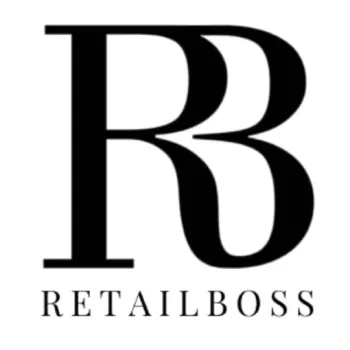Off-price retailing is a growing trend in the retail industry. It offers customers an opportunity to buy high-quality merchandise at lower prices compared to regular retail stores. In this comprehensive guide, we’ll explore the benefits of off-price retailing, the different types of off-price retailers, and the business model that makes it all possible.
What is Off-Price Retail?
Off-price retailing is a concept where retailers buy brand-name or designer merchandise from manufacturers at low prices and sell them to consumers at a discounted price. This allows manufacturers to cut their losses significantly by turning canceled orders into revenue. Off-price retail stores operate on low working capital and minimize overheads and maintenance costs, which leads to lower prices for customers.
Benefits of Off-Price Retailing
One of the primary benefits of off-price retailing is that it allows customers to purchase high-quality merchandise at a lower price than regular retail stores. Additionally, off-price retailing helps manufacturers cut their losses by turning canceled orders into revenue. The low-profit margins of off-price retail stores also mean they operate on low working capital, minimizing overheads and maintenance costs.
Types of Off-Price Retailers
1. Factory Outlets
Definition and Characteristics
Factory outlets are stores that sell merchandise directly from the manufacturer. These stores are usually located near the factory or manufacturing site. They offer products at a discounted price compared to regular retail stores. Factory outlets are popular for selling excess inventory and overstocked items.
Advantages and Disadvantages
One of the primary advantages of factory outlets is that customers can buy products directly from the manufacturer at a discounted price. However, the merchandise sold at factory outlets may not be the latest fashion or trend. Additionally, some customers may have concerns about quality control at factory outlets.
2. Independent Retailers
Definition and Characteristics
Independent retailers are stores that specialize in selling off-price products from various manufacturers. These stores are not affiliated with any particular brand or manufacturer. They offer a wide range of products, including clothing, accessories, and footwear.
Advantages and Disadvantages
One of the primary advantages of independent retailers is that they offer a wide range of products from different manufacturers. These stores also offer personalized service to customers. However, the quality of the products may vary, and customers may have concerns about the authenticity of the merchandise sold at these stores.
3. Warehouse Clubs
Definition and Characteristics
Warehouse clubs are stores that sell merchandise in bulk quantities at a discounted price. These stores require a membership fee to shop. They offer a wide range of products, including groceries, electronics, and clothing.
Advantages and Disadvantages
One of the primary advantages of warehouse clubs is that customers can purchase products in bulk at a discounted price. This can lead to significant savings for consumers. However, the merchandise sold at warehouse clubs may not be the latest fashion or trend. Additionally, customers may have concerns about the quality of the products sold at these stores.
The Business Model of Off-Price Retailing
Off-price retailers follow the traditional retail business model, with a twist. The customer value proposition of an off-price retailer is to deliver a good product assortment at the lowest price in the market. Low price is what will bring customers in the first place. Off-price retailers rely heavily on their supply chain management to maintain their business model. They work closely with manufacturers to buy merchandise in bulk quantities at a low cost.
This requires careful planning and forecasting to ensure that the retailer has enough inventory to meet demand. Off-price retailers also have a tight turnaround time for receiving and stocking merchandise, as they need to move product quickly to maintain their low prices.
Revenue Model
The revenue model for off-price retailers is centered around selling merchandise at a lower price than regular retail stores. This allows off-price retailers to attract customers who are looking for a bargain.
How the Business Generates Revenue
Off-price retailers generate revenue by selling merchandise at a lower price than regular retail stores. They do this by buying merchandise at low prices from manufacturers and passing the savings on to customers. This means that the profit margins for off-price retailers are lower than those of regular retail stores.
However, off-price retailers make up for this by selling a higher volume of merchandise. They also have lower overhead costs, such as rent and advertising, which allows them to offer their products at a lower price. Another way off-price retailers generate revenue is through their membership programs. Warehouse clubs require customers to pay a membership fee in order to shop at their stores. This fee helps to offset some of the costs associated with running the store, such as rent and utilities.
Pricing Structure
The pricing structure for off-price retailers is based on everyday low prices (EDLP). This means that prices are set low from the start and are not expected to be reduced further. This strategy encourages customers to buy the item while it is still available, as there may not be any further discounts.in the future. However, some off-price retailers may also offer occasional sales and promotions to further entice customers to make a purchase. These sales events are typically advertised in-store or through email newsletters to members.
Cost Structure
The cost structure for off-price retailers is focused on minimizing overheads and maintenance costs. This is achieved by operating on low working capital and maintaining a lean business model.
What the Business Needs to Spend On
Off-price retailers need to spend on inventory, store operations, marketing, and other operational expenses. However, they keep these costs lower than traditional retailers by maintaining a lean operation and keeping overheads low.
Profit Formula
The profit formula for off-price retailers is centered around generating profits by delivering the customer value proposition at the lowest price possible. This is achieved through a combination of smart buying, high inventory turnover, and an everyday low price strategy.Writing More…
How the Business Will Generate Profits While Delivering Customer Value Proposition
Off-price retailers generate profits by selling merchandise at a lower price than regular retail stores while also delivering a good product assortment. By offering products at lower prices, they attract customers who are looking for a bargain. This ultimately leads to increased sales and profit margins.
Key Success Factors for Off-Price Retailers
- High inventory turnover: To maximize profits, off-price retailers must turn their inventory quickly. This is achieved by holding low average inventory and launching newness more frequently.
- Smart buying: Off-price retailers must get creative with their buying strategies to be able to offer merchandise at low prices. This includes sourcing closeout deals, overruns, past season merchandise, department store cancellations, and private label manufacturing.
- Everyday low price strategy: Off-price retailers should follow an everyday low price strategy, setting prices low from the start and not reducing them further.
Off-Price Retail Landscape Explained
Where Excess Inventory Comes From
Excess inventory comes from a variety of sources, including manufacturing mistakes, overproduction, canceled orders, and past season merchandise. Off-price retailers capitalize on this excess inventory by purchasing it at a discounted rate and selling it to consumers at a lowerprice than traditional retail stores.
Resource Velocity
Resource velocity refers to how quickly a business needs to turn its resources, such as inventory, to deliver its value proposition and generate profits. In the case of off-price retailers, high resource velocity is crucial for success. By turning their inventory faster, these retailers can generate profit with each turn and ultimately achieve higher overall profits at the end of the fiscal year.
Keys to Success for Off-Price Retailers
- High Inventory Turnover: Achieving high inventory turnover is essential for off-price retailers to maximize profits. This means holding low average inventory and launching new products more frequently.
- Smart Buying: Off-price retailers must take advantage of various buying sources, such as closeout deals and overruns, to offer merchandise at low prices.
- Omnichannel Presence: Having both an online and offline presence can help off-price retailers reach a wider customer base and increase sales.
Brands in Off-Price Retailing
Major Department Stores’ Off-Price Brands
Many major department stores have introduced off-price brands to capitalize on the growing trend of off-price retailing. Examples include Nordstrom Rack, Saks Off 5th, and Macy’s Backstage. These off-price brands offer customers discounted merchandise from their parent companies, as well as other manufacturers.
INTURN’s Enterprise Inventory Optimization Solution
INTURN is a platform that helps brands optimize their excess inventory management by providing insights into consumer demand and market trends. This allows brands to make informed decisions about which merchandise to sell through off-price channels, ensuring that they can maximize profits while minimizing losses from excess inventory.
The Future of Off-Price Retailing
Off-price retailing has seen significant growth in recent years, with many new players entering the market. This has led to increased competition and pressure on existing retailers to innovate and expand their offerings. Some off-price retailers have expanded into e-commerce to reach a wider audience, while others have opened smaller, more targeted stores to cater to specific niches.
The key success factors for off-price retailers include high inventory turnover, smart buying, and an omnichannel presence. It’s crucial for businesses considering entering this market to understand the intricacies of the off-price retail landscape and develop a strong business model to maximize profits while delivering exceptional value to customers.

















